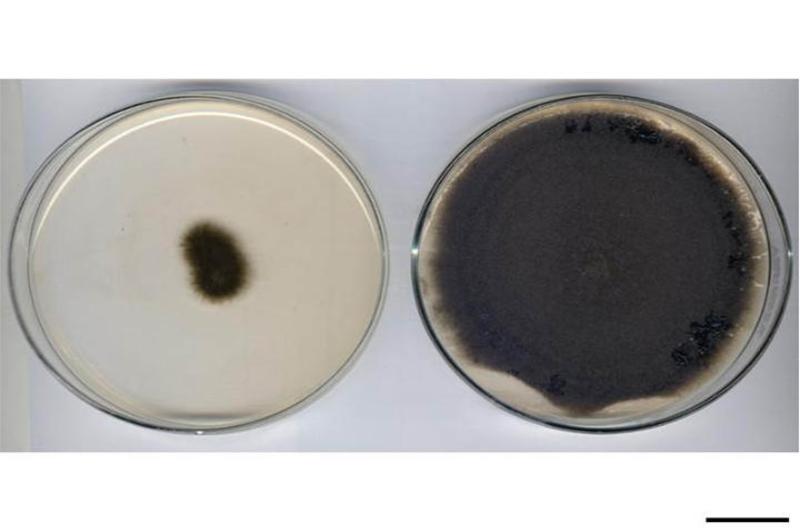It is crucial to identify mold, know its potential hazards, and remove it immediately. With this, you should learn about what is Alternaria mold.
Whether you are going to stay in your house for many years or you’re anticipating selling it in the future, recognizing mold should be one of your priorities. Ranging from mild to massive contamination, mold can be toxic and can affect your living situation.

Did you know that if mold inspectors find the mold test positive, the house value drops by 3%? So, have your house well-treated and be vigilant for unsightly mold.
The Alternaria Species
Alternaria is dark-pigmented fungi with a brown or dark green appearance that can infect over 4000 plant species. They are widespread, with over 300 species known.
Every year, they do enormous harm to agricultural items, such as cereals, fruits, and vegetables. Alternaria is the culprit for rot in mango farms.
Every year, there is at least 20% of yield loss in agriculture due to Alternaria fungi. They do not only invade homes, but they also destroy acres worth of crops.
What Are Common Types Of Alternaria?
Studies are still in progress concerning Alternaria species. Today, there are around 250 species known to science.
Here are some common types that might be lurking behind your drywalls:
Alternaria alternata is the type of mold commonly found outside the house, but it can also be found indoors. A. alternata spores depend on windy, dry, and warm days.
They pose a problem for people with breathing problems. In a geographical sense, they thrive in tropical zones and sub-tropical zones.
Some other types are Alternaria stemphyloides, Alternaria geophilia, and Alternaria teunissima. These are specific epithets from the Alternaria genus, but limited studies emerge.
Where Do They Usually Grow?
Mold is a familiar nemesis to homes and buildings. They can grow in particular conditions, such as damp and dark places.
Most mold species cannot thrive below 40 degrees Fahrenheit. Typically, mold grows in temperatures between 77 degrees Fahrenheit and 86 degrees Fahrenheit, especially when high humidity levels.
Alternaria mold requires minimal moisture to develop. Experts say that Alternaria species grow on minimum value water activity (aw) = 0.65.
This type of mold is found on clothing, carpets, windows, doors, and basements. If your clothes are left damp, expect mold colonies in 24 hours.
Usually, you can find Alternaria in plants and plant-based spoiled meals. They are tagged as outdoor mold, but they can cause serious health concerns when they enter your house.
Health Risks and Concerns On Alternaria
According to Marta F. Gabriel, the Alternaria alternata spores are a well-known biological contaminant and a prevalent source of powerful air allergens in environmental samples. Being exposed to Alternaria is most likely to happen outdoors.
When inhaled, people suffering from asthma and lung problems have increased allergy severity. Alternaria mold should not be underestimated as they pose high-risk factors, especially when exposed to these.
Also, the Alternaria species has been associated with hypersensitivity pneumonitis. It is also studied to cause extrinsic asthma.
The acceptable mold level inside an establishment is 200-500 spores, and if the level exceeds 1000 spores, you should deal with it right away.
How Do You Look For This Mold?
One notable sign of this mold is its scent. Once you smell some musty smells emanating from the furniture, then it must be mold.
Other mold types have appearances of green, black, and white, while Alternaria mold has brown to dark green. Alternaria has tiny fuzzy hairs, be careful as you should not touch them.
How To Prevent Alternaria Mold?
It goes without saying that the efficient way to prevent mold invasion is to keep your house clean and do regular maintenance. You will find Alternaria mold sitting on the surface of air conditioning systems, such as the vents and pipes.
If you’re looking to sell your precious home in the future, advertise it for lease, or live your life peacefully in it, you might want to do some cleaning first.
Unlike mildew and other bacteria, mold can penetrate the insides of the object it is clinging to. Alternaria mold, in particular, has long strands of hyphae buried deep into the thing.
First, if you’re working on furniture, let it dry under the sun. On the other hand, if you work on walls and parts of the house that can’t be brought outside, clean it with a HEPA-grade vacuum.
Second, dilute a mixture of detergent and bleach in a bucket of warm water. Scrub it off until the mold is gone.
Third, spritz a little bit of white distilled vinegar over the surface if you fancy homemade cleaning solutions. Spritz it with mold remover for better results.
Lastly, let the furniture or clothing dry. It might not be a 100% guarantee that Alternaria won’t come back, but at least you took matters to remove it.
Check out these articles if you want to know more about “how to clean mold from air conditioner coils” and “how to prevent mold in garage”.
Conclusion
Mold is a natural fragment of the environment — they will appear just about anywhere. The important thing is you recognize what is Alternaria mold and how to deal with it.
